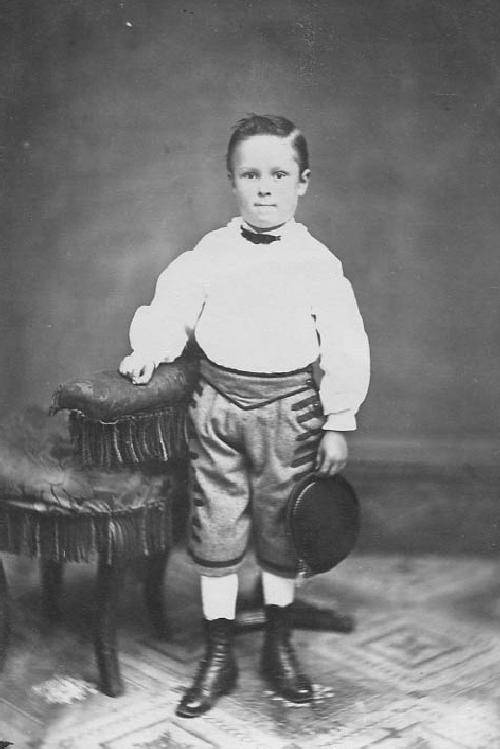
Figure 1.--This tintype looks to have been taken about 1870. Note the rounded-crown hat with a rather low arch and what looks like a tassel. Notice the knee pants and white long stockings. |

|
These rounded-crown hats were made in many different styles and varitions. The two basic types of rounded-crown hats are hard/stiff and soft crown hats. The soft rounded-crown hats look rather like caps, but as they have brims all around they are actually hats. The hard version was by far the most common. Styling depended on the type of hat. The crown varied substantially from hat to hat. We see wide variation in the crowns of the hard hats . The crown could be arched to various extents. Some were almost flat. Most were clearly rounded, but the arch could vary substantially. The brims also varied in size, but were mostly of moderate or narrow whith. The hat bands could alo also varied. Some seem to have had tassels. A problem with assessing these hats is there does not seem to be specific names for the different types of rounded crown hats, at least we have been unable to find any such terms.
The hard version of the rounded crown hat was by far the most common. It was primarily a boys' style. Styling depended on the type of hat. The crown varied substantially from hat to hat. This was a very common boys' hat during the 19th century. We are not sure when theft first appeared , but we notice them in the 1840s. The absence of photographt before the 1840s makes it difficult to determine if these hats were commonly worn before the 40s. This was one of the basic boys' hat style during the century. Headwear was more common during the 19th than the 20th century, specially hats. We do notice these hats in the 1890s, but we rarely see them after the tirn of the 20th century. We see boys wearing them both with suits as well as blouses and other shirt-like garments. This seemns to have been particularly prominent in rural areas. Fashionable city boys might wear more stylish heawear. A common material seems to have been felt. We also notice straw hats. We see wide variation in the crowns of the hard hats . The crown could be arched to various extents. Some were almost flat. Most were clearly rounded, but the arch could vary substantially. The brims also varied in size, but were mostly of moderate or narrow whith. a goof example of a narrow brim is a rounded-crown hat worn by John Faulkes during the 1870s. The hat bands could alo also varied. Some seem to have had tassels.
The soft rounded-crown hats look rather like caps, but as they have brims all around they are actually hats. We are not sure about the origins. This is not a hat style that we thought was very common, but as we have pursued our investigation we have note more in the photographic record. Many of these soft caps seem to have been made in dark colors, although we are unsure about the specific shades. We are unsure about the time line. We are unsure about the 1870s. We do note them beginning in the 1880s. We are also not sure if they were considerd a formal hat, but we do see them being worn with suits. They seem to have always been worn with the brim folded up. The soft conctruction meant that the brim had to be sorn either up or down. As far as we can tell they were a boys' style, but we do note a varity of specific uses in the 20th centry. They seem similar to the U.S. Navy swabie hat. (As the brim was worn up it looks like and was more commonly called a cap. We also notice U.S. Army fatigue hats during World War II
Navigate the Boys' Historical Clothing Web Site:
[Return to the Main U.S. rounded-crown hat page]
[Return to the Main U.S. hat style page]
[Return to the Main U.S. country headwear page]
[Return to the Main rounded-crown hat page]
[Introduction]
[Activities]
[Biographies]
[Chronology]
[Clothing styles]
[Countries]
[Bibliographies]
[Contributions]
[FAQs]
[Glossary]
[Images]
[Links]
[Registration]
[Tools]
[Boys' Clothing Home]
